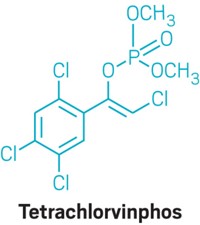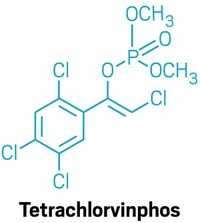Advertisement
Grab your lab coat. Let's get started
Welcome!
Welcome!
Create an account below to get 6 C&EN articles per month, receive newsletters and more - all free.
It seems this is your first time logging in online. Please enter the following information to continue.
As an ACS member you automatically get access to this site. All we need is few more details to create your reading experience.
Not you? Sign in with a different account.
Not you? Sign in with a different account.
ERROR 1
ERROR 1
ERROR 2
ERROR 2
ERROR 2
ERROR 2
ERROR 2
Password and Confirm password must match.
If you have an ACS member number, please enter it here so we can link this account to your membership. (optional)
ERROR 2
ACS values your privacy. By submitting your information, you are gaining access to C&EN and subscribing to our weekly newsletter. We use the information you provide to make your reading experience better, and we will never sell your data to third party members.
Environment
Flea Powder May Pose Risk To Tots
by Britt E. Erickson
January 11, 2016
| A version of this story appeared in
Volume 94, Issue 2

The organophosphate insecticide tetrachlorvinphos (TCVP) used in pet products to control fleas and ticks may pose a health risk to small children, according to a draft assessment released by EPA late last month. Specifically, the potential risk is for toddlers aged one to two years who come into contact with pets treated with the chemical in dust form. EPA conducted the assessment in response to a lawsuit by the environmental group Natural Resources Defense Council, which wants the agency to ban all pet products containing TCVP. The group claims that the pesticide is neurotoxic and poses unacceptable risks to children’s developing brains and nervous systems. In 2014, EPA denied a petition from the group seeking a ban, saying TCVP pet products pose no risk to human health. NRDC then challenged that decision last year. As part of that litigation, EPA agreed to release a revised health risk assessment for the chemical by the end of 2016. The draft assessment considers new data about residue on pet fur and about liquid and dust formulations with TCVP.






Join the conversation
Contact the reporter
Submit a Letter to the Editor for publication
Engage with us on Twitter